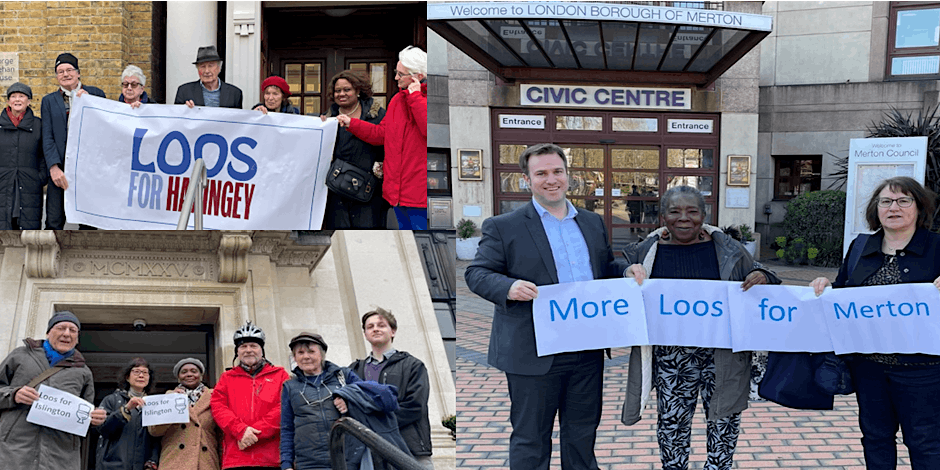Council motion guide

About council motions:
A council motion is a request submitted to a council for a particular issue to be discussed during a full council meeting. Council motions are raised by councillors – not members of the public. However, members of the public can write to their local councillor and ask that they raise a specific issue.
Council motions offer a useful opportunity for residents to engage their local authority on the topic of improving public toilet provision and often lead to tangible action. We’ve outlined how you can go about doing this in a five-step plan.
Step 1: Identify your councillor and gather their contact details
- You can see who your local councillors are, as well as their email addresses, by entering your postcode at https://www.writetothem.com/
- If you have any questions about finding your councillor please email Dom Taylor at dtaylor@ageuklondon.org.uk.
Step 2: Draft your email
- Having gathered your local councillor’s details, it’s time to send them an email outlining your concerns and requesting that they submit a motion.
- You can follow the template below:
Dear Councillor [Surname],
My name is [your name] and I’m a resident in [your ward].
I’m writing to ask that you raise the matter of developing a public toilet strategy, in order to improve provision across [your borough] when the full council next convenes.
At present, a lack of provision is forcing many older residents and others to limit their time spent outside. This has severe consequences not only for mental and physical health, but also the local economy.
I have attached a draft motion to this email, which provides further information on this issue.
I and others in the community would be grateful if you could raise this motion at full council. Accessible public toilets are an integral part of our community infrastructure, the importance of which in tackling social isolation is often understated.
Kind regards,
[Your name]
[Your address]
Step 3: Submit and monitor response
- Attach the draft council motion to your email and send it to the councillor. You could include the link or download and attach the motion as an attachment.
- Your councillor should get back to you, ideally within two weeks, but this can vary. If two weeks go by with no response, forward your email again and wait for a few days.
- On the off chance you receive no response at all, it may be worth sending the same email/attachment to another of your local councillors or raising the matter at an upcoming councillor’s surgery for your ward.
- Your councillor may have further questions regarding the motion, or may even suggest meeting to discuss the matter in detail. Age UK London will be on hand to offer any help with this – providing further information and/or attending meetings.
Step 4: Check if the motion was raised at the council meeting
- Once you receive your response from the councillor, they should tell you if they plan to raise the motion at the next council meeting. Make sure they give you a date for the meeting.
- Full council meetings are open to members of the public. If you'd like to, you may be able to attend in-person at the gallery or watch online.
- If you’re unsure where to find details of the next meeting, email dtaylor@ageuklondon.org.uk and we’ll give you a hand.
- During the council meeting, councillors will vote upon your motion.
Step 5: Keep us updated
- We’re keen to provide all the help we can to see your motion acted upon. Please do tell us if you plan to email your councillor.
- Should your motion be successful in the vote, we’ll be on hand to support you with the follow-up.
- Likewise, if your motion is unsuccessful, get in touch and we’ll advise on next steps.
